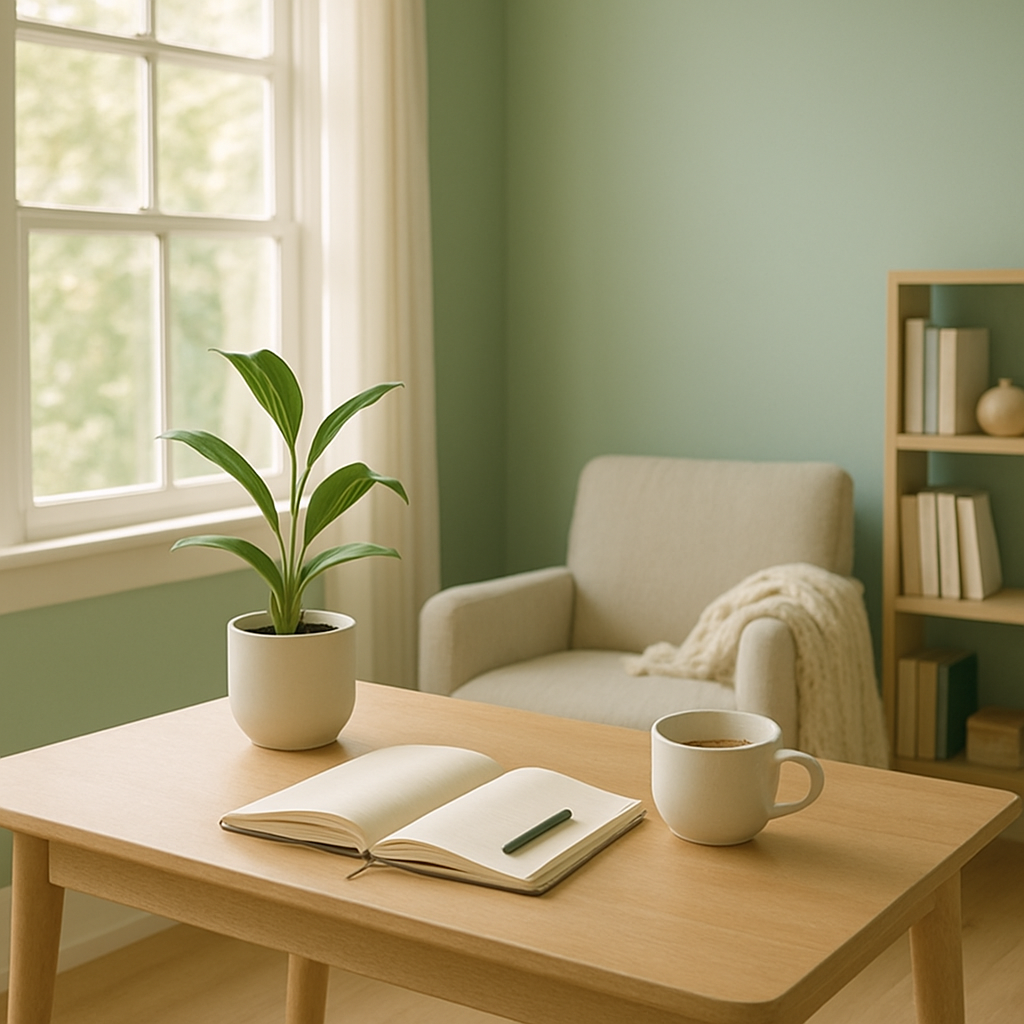How to Declutter Your Mind and Improve Mental Clarity

In a world filled with constant notifications, endless to-do lists, and information overload, our minds can quickly become cluttered with thoughts, worries, and distractions. This mental clutter often leads to decreased focus, increased stress, and difficulty making decisions. Clearing this cognitive congestion isn’t just about feeling better it’s about creating space for creativity, productivity, and mental well-being.
Mental clarity doesn’t happen by accident. It requires intentional practices and habits that help filter unnecessary mental noise and sharpen your focus. I’ve spent years testing different approaches to decluttering my mind, and I’ve discovered that combining several techniques creates the most powerful results.
The mental fog that many of us experience isn’t inevitable. With consistent practice and the right strategies, you can train your brain to maintain clarity even during challenging times. Let’s explore practical ways to declutter your mind and improve your mental clarity.
The Brain Dump Method That Actually Works
One of the most effective techniques I’ve found for mental decluttering is what I call the “complete brain dump.” Unlike standard note-taking, this approach requires getting absolutely everything out of your head.
Grab a notebook and set a timer for 15 minutes. Write down every single thought, worry, task, idea, and random notion floating around in your mind. Don’t organize, filter, or judge just get it all out. This process works because your brain expends significant energy trying to remember things. By externally capturing these thoughts, you free up mental resources.
I tried this during a particularly overwhelming work week and was shocked to fill nearly four pages with random thoughts from major project deadlines to remembering to buy dog food. The relief was immediate. My brain no longer needed to keep juggling all those items.
After the brain dump, sort your list into categories: urgent tasks, future projects, worries, ideas, etc. Then transfer actionable items to appropriate systems calendar, to-do list, idea journal. For worries, ask yourself if they’re within your control. If yes, add any necessary actions to your task list. If not, practice consciously letting them go.
This technique works best when done regularly weekly for maintenance, daily during high-stress periods. Many of my friends thought this sounded too simple to be effective until they tried it themselves. Now several do it every Monday morning to start their week with clarity.
Digital Detox and Attention Management
Our devices constantly fragment our attention, creating mental clutter through endless interruptions. Last month, I tracked my phone pickups using a monitoring app and was stunned to discover I checked my phone 134 times in a single day most of these checks weren’t even necessary!
Rather than attempting extreme measures like abandoning technology altogether, I’ve found success with structured boundaries:
- Designate specific “phone-free” zones in your home, particularly your bedroom
- Turn off non-essential notifications (I keep only calls, texts from family, and calendar alerts)
- Schedule specific times to check email and social media rather than responding to every alert
- Use “Do Not Disturb” mode during focused work periods
- Try a weekend mini-detox by deleting social apps Friday evening and reinstalling Monday morning
The most surprising benefit I discovered wasn’t just improved focus it was how much my anxiety decreased. Without the constant stream of news alerts, work emails, and social media updates, my mind had space to process thoughts more deeply.
Your brain needs periods of boredom and quiet to make connections and generate insights. By constantly filling every moment with input, we rob ourselves of this essential mental processing time.
Physical clutter also contributes to mental noise. Our brains process everything in our visual field, even if we’re not consciously aware of it. This constant processing drains cognitive resources. Start with your workspace clear your desk of everything except what you need for your current task. Then gradually expand to other areas of your home.
My own experiment with this approach revealed something interesting: certain types of clutter affected my mental state more than others. Papers and digital clutter (unorganized files, too many browser tabs) impacted my focus significantly more than other types of physical objects.
Movement and Mindfulness Practices
Physical movement creates mental space. When I’m feeling mentally stuck or overwhelmed, a 20-minute walk without my phone consistently clears my head better than an hour of sitting and trying to force clarity.
Research supports this connection between physical movement and mental clarity. Exercise increases blood flow to the brain and triggers the release of brain-derived neurotrophic factor (BDNF), which supports cognitive function and helps clear mental fog.
You don’t need intense workouts to get these benefits. Moderate activities like walking, yoga, or even simple stretching can effectively clear mental clutter. The key is consistency short daily movement breaks are more beneficial than occasional longer sessions.
Mindfulness practices complement physical movement by training your attention. Simple breathing exercises can quickly reset your mental state when you’re feeling overwhelmed:
- Breathe in for a count of four
- Hold for a count of two
- Exhale for a count of six
- Repeat for 2-3 minutes
This pattern activates your parasympathetic nervous system, helping calm your mind. I was skeptical about breathing exercises until I started using this technique during stressful work meetings. The difference in my mental clarity before and after was remarkable.
For deeper mental decluttering, try a body scan meditation. Starting at your toes and moving up to your head, pay attention to each part of your body, noticing any tension or discomfort without judgment. This practice pulls your attention away from racing thoughts and into the present moment.
My friend Jake, a software developer who deals with complex problems daily, incorporates a 10-minute body scan into his lunch break. “It’s like hitting the reset button on my brain,” he says. “Problems that seemed impossible before often have obvious solutions afterward.”
Streamlining Decision Processes
Decision fatigue silently drains mental energy and creates clutter. We make hundreds of decisions daily, from what to wear to complex work choices, and each one depletes our mental resources.
Creating systems for routine decisions frees mental space for more important matters. Try these approaches:
- Simplify your wardrobe with interchangeable items
- Plan meals weekly instead of deciding daily
- Create templates for recurring work tasks
- Establish personal policies for common situations (like automatically declining certain types of requests)
I implemented a “Monday meal plan” where I decide all weekday meals on Sunday evening. This eliminated the daily “what’s for dinner” mental loop and reduced my grocery shopping time by about 40%.
For bigger decisions, I use a modified version of the 10/10/10 rule: How will this decision impact me in 10 minutes, 10 months, and 10 years? This framework helps cut through mental noise and focus on what truly matters.
Another effective technique is setting decision deadlines. When facing choices that don’t have clear answers, give yourself a specific timeframe to decide, gather necessary information during that period, then commit when the deadline arrives. This prevents the mental drain of revisiting the same decision repeatedly.
Mental clarity isn’t a permanent state it requires ongoing maintenance. Just like physical spaces get cluttered again after cleaning, your mind will naturally accumulate new thoughts, worries, and distractions. The goal isn’t to achieve perfect clarity once, but to develop habits that regularly clear mental space.
Start with one or two techniques that resonate with you, practice them consistently for a few weeks, then gradually add others. Notice which approaches have the biggest impact on your specific type of mental clutter.
A decluttered mind leads to better decisions, increased creativity, and greater peace. By intentionally creating mental space through these practices, you’ll discover a clearer, calmer way of thinking that enhances every aspect of your life.


